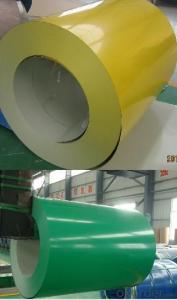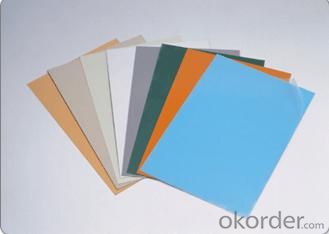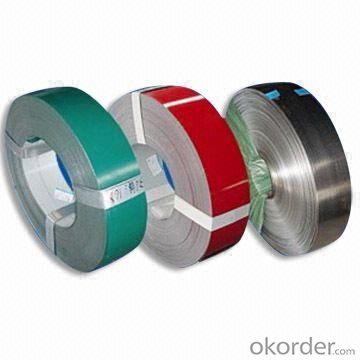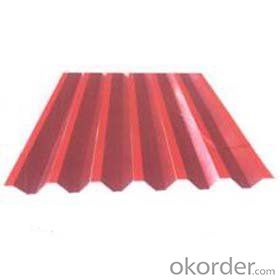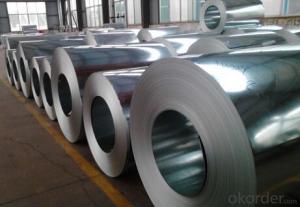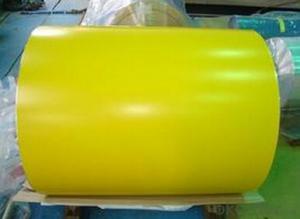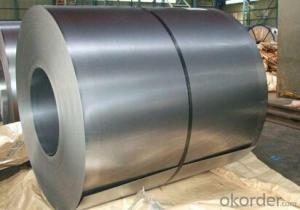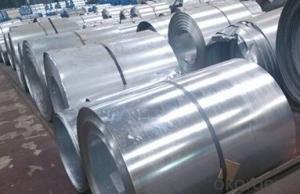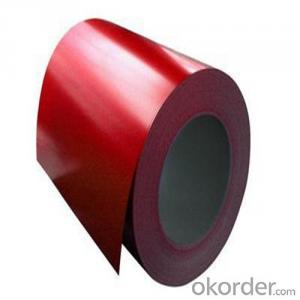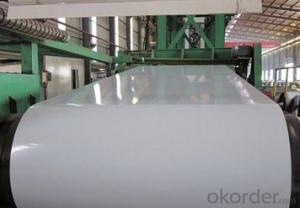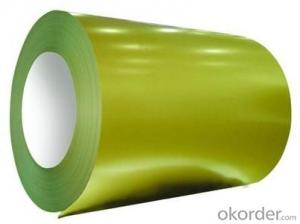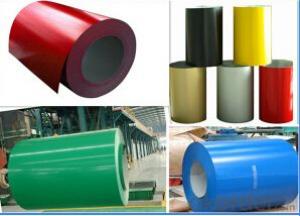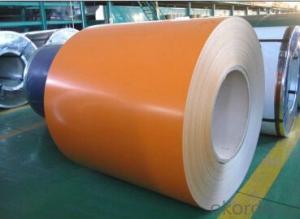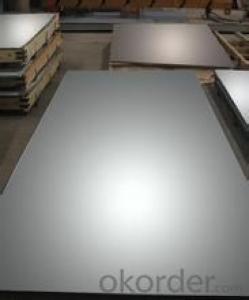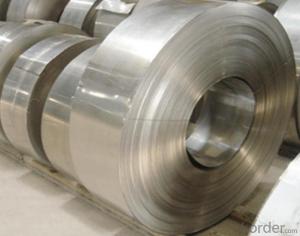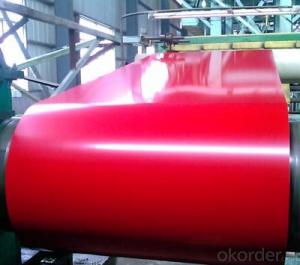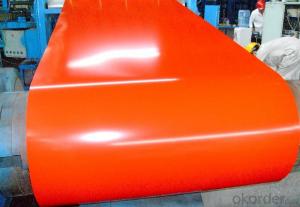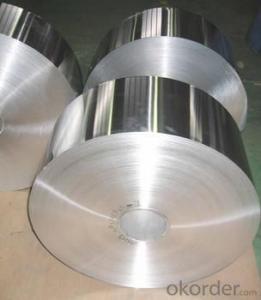Prepainted galvanized steel coils PPGI PPGL
- Loading Port:
- Shanghai
- Payment Terms:
- TT OR LC
- Min Order Qty:
- 50 m.t.
- Supply Capability:
- 100000 m.t./month
OKorder Service Pledge
OKorder Financial Service
You Might Also Like
colour coated steel
painting colour steel , zinc coated steel , lead coated steel
Specifications:
galvanized steel coil:
1.Thickness:0.17mm-1.5mm
2.Zinc coated:40g-275g/2
3.Standard:dx51d+z,sgcc
We manufacture Galvanized Steel Coils,Pre-painted Galvanized Steel Coils , etc
Prepainted steel coil features:
1. Zinc coating :40-120g(as reauired)
2. thickness:0.17-1.2mm
3. width:914-1250mm(900mm,1215mm,1250mm,1000mm the most common)
4. coil id:508m610mm
5. coil weight: 3-12(as required)
6. surface treatment:RAL color
Galvanized steel coil features:
1. Zinc coating :40-275g( as required)
2. thickness:0.17-1.2mm
3. width:914-1250mm(900mm,1215mm,1250mm,1000mm the most common)
4. coil id:508m610mm
5. coil weight: 3-12(as required)
6. surface treatment: cremated, oiled, skin passed
7. Spangle: regular,small, zero
8.Application: With excellent cold bending molded manufacturablity, good decoration effect, strong anti-corrosion ability, galvanized steel coils and sheets are also pollution-free and easily recycled. Accordingly, they can be used as final products and basic plates of color coated steel coils and widely applied in construction, home appliances, decoration, ect.
Product name | steel coil,galvanized steel,galvanized steel coil |
Material | DX51D, SGCC, SPCC, CGCC, DX51D |
Normal thickness | 0.17-1.2mm |
Normal width | 900mm,914mm, 1000mm, 1200mm, 1220mm, 1250mm |
Coil weight | 3-12ns |
Certificate | BV & SGS |
Original | Shandong,China |
Payment terms | L/C or T/T |
Delivery time | within 15 ~ 25 days after 30% prepayment |
- Q: How long do steel strips typically last?
- Steel strips typically have a long lifespan and can last anywhere between 15 to 30 years, depending on various factors such as the quality of steel used, the conditions they are exposed to, and the level of maintenance provided.
- Q: How are steel strips cold rolled?
- Steel strips are cold rolled through a process known as cold rolling. This process involves passing the steel strip through a series of rollers at room temperature to reduce its thickness and improve its surface finish. The first step in cold rolling is to prepare the steel strip by cleaning it to remove any impurities or surface contaminants. Once the strip is clean, it is then fed into a series of rolling mills. These rolling mills consist of a set of rollers that gradually reduce the thickness of the steel strip as it passes through them. The rollers in the cold rolling process work in pairs, with each pair consisting of a work roll and a backup roll. The work roll is responsible for applying pressure to the steel strip, while the backup roll provides support and helps maintain the desired shape. The rolls are usually made of high-quality steel or other materials that can withstand the forces and pressures involved in the cold rolling process. As the steel strip passes through the rolling mills, it undergoes a series of reductions in thickness. The distance between the rollers is gradually decreased, causing the strip to be compressed and elongated. This reduction in thickness helps improve the mechanical properties of the steel strip, such as its strength and hardness. In addition to reducing the thickness, the cold rolling process also helps improve the surface finish of the steel strip. The pressure applied by the rollers helps smooth out any surface imperfections and defects, resulting in a more uniform and smoother surface. To ensure the accuracy and consistency of the cold rolling process, various control systems and measurements are used. These include gauges and sensors that monitor the dimensions, temperature, and other parameters of the steel strip as it passes through the rolling mills. Overall, the cold rolling process is an essential step in the production of steel strips. It helps refine the steel's properties, such as thickness, strength, and surface finish, making it suitable for a wide range of applications in industries such as automotive, construction, and manufacturing.
- Q: What are the common defects found in steel strips?
- Some common defects found in steel strips include surface defects like scratches, pits, and scale, as well as internal defects such as cracks, voids, and segregation. Other common defects may include edge deformation, wavy edges, and thickness variations.
- Q: How are steel strips used in the production of kitchen utensils?
- Steel strips are commonly used in the production of kitchen utensils as they are cut, shaped, and formed into various utensil components such as blades, handles, or frames. These strips provide the necessary strength, durability, and corrosion resistance required for kitchen utensils, ensuring they can withstand regular use and maintain their quality over time.
- Q: Can steel strips be used in the production of automotive wheels?
- Yes, steel strips can be used in the production of automotive wheels. Steel strips are commonly used as the primary material for manufacturing wheels due to their high strength, durability, and ability to withstand heavy loads and impacts.
- Q: What are the common surface finishes for steel strips?
- There are several common surface finishes for steel strips, each serving a specific purpose and providing unique properties. Some of the most common surface finishes for steel strips include: 1. Hot-dip galvanized: This finish involves immersing the steel strip into a bath of molten zinc, creating a protective layer that prevents corrosion. Hot-dip galvanized steel strips are highly durable and resistant to rust and atmospheric conditions. 2. Electro-galvanized: In this process, a thin layer of zinc is electroplated onto the steel strip, providing protection against corrosion. Electro-galvanized steel strips have a smoother and more uniform appearance compared to hot-dip galvanized ones. 3. Plain/untreated: Plain or untreated steel strips have no additional surface finish applied. They are typically used in applications where corrosion resistance is not a concern or when the steel strip will undergo further treatment or coating. 4. Cold-rolled: Cold-rolling is a process that involves passing the steel strip through rollers at room temperature, resulting in a smoother and more precise surface finish. Cold-rolled steel strips are often used in applications that require a high level of dimensional accuracy. 5. Polished: Polishing involves mechanically smoothing the surface of the steel strip using abrasives or polishing compounds. This finish provides a reflective and aesthetically pleasing appearance, making polished steel strips suitable for decorative applications. 6. Coated: Steel strips can also be coated with various materials to enhance their properties. Common coatings include organic coatings (such as paint or powder coating) and inorganic coatings (such as zinc or tin). Coated steel strips offer improved corrosion resistance and can be customized for specific applications. These are just a few of the common surface finishes for steel strips. The choice of finish depends on the desired properties, application requirements, and environmental conditions the steel strip will be exposed to.
- Q: How are steel strips coated with protective films?
- Steel strips are coated with protective films through a process known as steel strip coating. This involves applying a layer of protective material, usually through methods like hot-dip coating or electroplating, to the surface of the steel strips. The protective film helps prevent corrosion, improve durability, and enhance the overall performance of the steel strips in various applications.
- Q: How are steel strips used in the manufacturing of medical devices?
- Due to their unique properties such as strength, durability, and corrosion resistance, steel strips have found wide usage in the manufacturing of medical devices. These strips are typically composed of stainless steel, an alloy renowned for its exceptional mechanical and chemical characteristics. In the medical device industry, steel strips serve a multitude of purposes. One common application is their use in producing surgical instruments like scalpels, forceps, and scissors. These instruments require a sturdy and sharp edge, which can be achieved by shaping and sharpening the steel strips. The stainless steel composition ensures that the instruments remain resistant to corrosion, reducing the risk of contamination during medical procedures. Moreover, steel strips are employed in the production of medical implants such as pacemakers, joint replacements, and spinal fixation devices. These implants necessitate robustness and biocompatibility to ensure long-term functionality and patient safety. Steel strips provide the requisite strength for these implants, enabling them to withstand the forces and stresses they may encounter within the human body. Additionally, steel strips find use in fabricating medical equipment, including imaging devices like X-ray machines and MRI scanners. These devices demand a stable and rigid structure to maintain accuracy and precision. Steel strips offer the necessary structural integrity, facilitating the precise alignment of components and ensuring optimal performance of the equipment. Furthermore, steel strips are utilized in the manufacturing of medical tubing, catheters, and stents. These devices often require a combination of flexibility and strength to navigate through the intricate pathways of the body. Steel strips can be shaped and formed into thin tubes or wires, enabling the production of flexible yet sturdy medical devices. In conclusion, steel strips play a vital role in the manufacturing of medical devices. Their strength, durability, and corrosion resistance make them an ideal material for various applications in the medical industry. Whether it is for surgical instruments, implants, medical equipment, or tubing, steel strips contribute to the production of high-quality and reliable medical devices that enhance patient care and improve medical outcomes.
- Q: How are steel strips used in the manufacturing of electrical connectors?
- Steel strips are commonly used in the manufacturing of electrical connectors as they provide structural support and durability. They are often used as the base material for connector bodies or as reinforcement in critical areas. Additionally, steel strips can be shaped and stamped to create specific connector designs, ensuring secure connections and long-lasting performance.
- Q: What is the fire resistance of a steel strip?
- The fire resistance of a steel strip depends on various factors such as the composition of the steel, its thickness, and the presence of any protective coatings. Generally, steel has a high melting point and does not combust easily. However, when exposed to high temperatures, it can weaken and lose its structural integrity. Steel strips that are specifically designed for fire resistance may have additional features such as fire-resistant coatings or insulation layers to enhance their ability to withstand fire. It is important to consult the manufacturer's specifications and industry standards to determine the fire resistance rating of a specific steel strip product.
Send your message to us
Prepainted galvanized steel coils PPGI PPGL
- Loading Port:
- Shanghai
- Payment Terms:
- TT OR LC
- Min Order Qty:
- 50 m.t.
- Supply Capability:
- 100000 m.t./month
OKorder Service Pledge
OKorder Financial Service
Similar products
Hot products
Hot Searches
Related keywords
